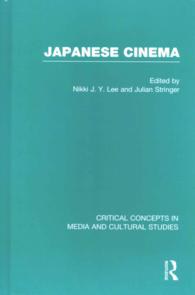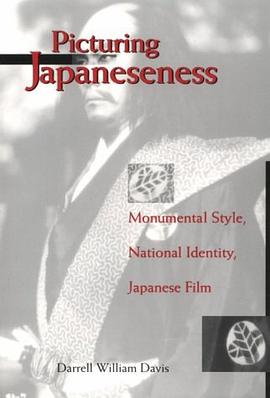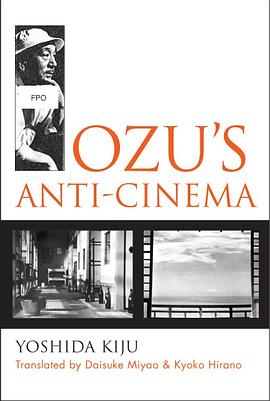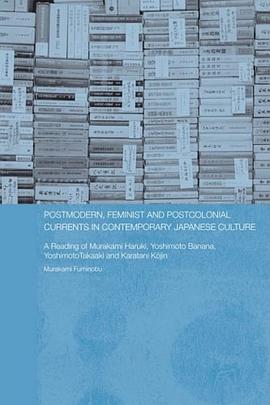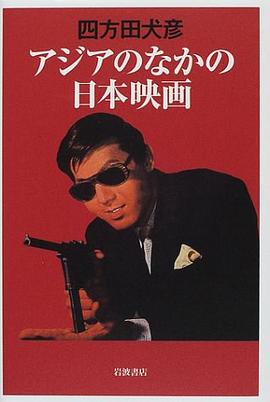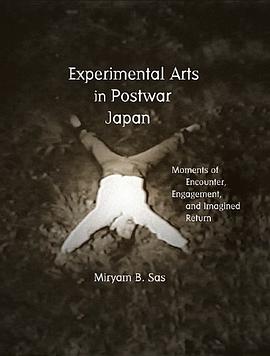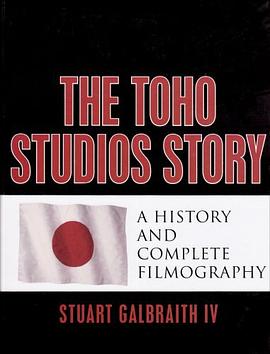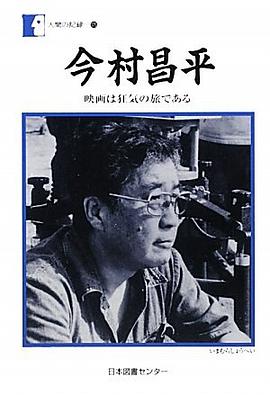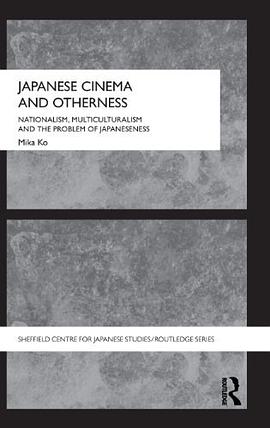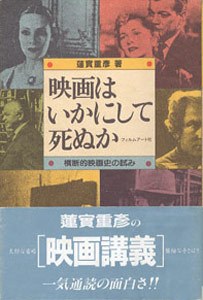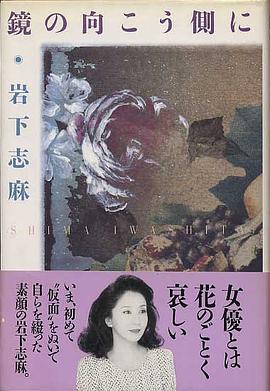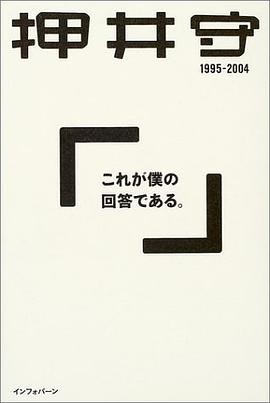Volume i: Japanese Film Historiography: Issues and Debates
Part 1: Key Positions
1. Donald Richie, ‘The Japanese Film: A Personal View—1947–1995’, Asian Cinema, 1995, 7, 2, 3–17.
2. Peter Lehman, ‘The Mysterious Orient, the Crystal Clear Orient, the Non-existent Orient: Dilemmas of Western Scholars of Japanese Film’, Journal of Film and Video, 1987, 39, 1, 5–15.
3. Mitsuhiro Yoshimoto, ‘Japanese Cinema in Search of a Discipline’, Kurosawa: Film Studies and Japanese Cinema (Duke University Press, 2000), pp. 8–49.
4. Kenji Iwamoto, ‘Film Criticism and the Study of Cinema in Japan: A Historical Survey’, Iconics, 1987, 1, 129–46.
5. Yuriko Furuhata, ‘Returning to Actuality: Fûkeiron and the Landscape Film’, Screen, 2007, 48, 3, 345–62.
6. Mika Ko, ‘"Neo-Documentarism" in Funeral Parade of Roses: The New Realism of Matsumoto Toshio’, Screen, 2011, 52, 3, 376–90.
Part 2: The Silent Era
7. Komatsu Hiroshi, ‘Some Characteristics of Japanese Cinema before World War I’, in Arthur Nolletti Jr. and David Desser (eds.), Reframing Japanese Cinema: Authorship, Genre, History (Indiana University Press, 1992), pp. 229–58. (Translated by Linda C. Ehrlich and Yuko Okutsu.)
8. Aaron Gerow, ‘The Motion Pictures as a Problem’, Visions of Japanese Modernity: Articulations of Cinema, Nation, and Spectatorship, 1895–1925 (University of California Press, 2010), pp. 40–65.
9. Tanizaki Jun’ichirō, ‘The Present and Future of Moving Pictures’, in Thomas LaMarre, Shadows on the Screen: Tanizaki Junichirō on Cinema and ‘Oriental’ Aesthetics (Center for Japanese Studies, University of Michigan, 2005), pp. 65–74. (Translated by Thomas LaMarre.)
10. Joanne Bernardi, ‘Developing Images, Defining Words’, Writing in Light: The Silent Scenario and the Japanese Pure Film Movement (Wayne State University Press, 2001), pp. 21–66.
11. Daisuke Miyao, ‘Before Anime: Animation and the Pure Film Movement in Pre-War Japan’, Japan Forum, 2002, 14, 2, 191–209.
12. Mitsuyo Wada-Marciano, ‘The Creation of Modern Space’, Nippon Modern: Japanese Cinema of the 1920s and 1930s (University of Hawai’i Press, 2008), pp. 15–42.
13. Chika Kinoshita, ‘The Benshi Track: Mizoguchi Kenji’s The Downfall of Osen and the Sound Transition’, Cinema Journal, 2011, 50, 3, 1–25.
Part 3: Constructing Classical Cinema
14. David Bordwell, ‘Visual Style in Japanese Cinema, 1925–1945’, Film History, 1995, 7, 1, 5–31.
15. Noel Burch, ‘Cross-Currents’, To the Distance Observer: Form and Meaning in the Japanese Cinema (University of California Press, 1979), pp. 89–122.
16. Freida Freiberg, ‘Turning Serious: Yamanaka Sadao’s Humanity and Paper Balloons (1937)’, in Alastair Phillips and Julian Stringer (eds.), Japanese Cinema: Texts and Contexts (Routledge, 2007), pp. 50–62.
17. Donald Kirihara, ‘The International Film Culture of Japan’, Patterns of Time: Mizoguchi and the 1930s (University of Wisconsin Press, 1992), pp. 39–57.
18. Darrell William Davis, ‘Approaching the Monumental Style’, Picturing Japaneseness: Monumental Style, National Identity, Japanese Film (Columbia University Press, 1996), pp. 37–72.
19. Akira Kurosawa, ‘The Men Who Tread on the Tiger’s Tail’, Something Like an Autobiography (Vintage Books, 1983), pp. 140–4. (Translated by Audie E. Bock.)
Volume II: Post-1945: Authorship and Genre
Part 4: Approaches to the Post-War Industry
20. Joseph L. Anderson and Donald Richie, ‘New Sequence: 1945–1949’, The Japanese Film: Art and Industry (Princeton University Press, 1982), pp. 159–80.
21. Colleen A. Laird, ‘Star Gazing: Sight Lines and Studio Brands in Post-War Japanese Film Posters’, Journal of Japanese and Korean Cinema, 2011, 3, 2, 95–115.
22. Jasper Sharp, ‘Buddha: Selling an Asian Spectacle’, Journal of Japanese and Korean Cinema, 2012, 4, 1, 29–52.
23. Ronald Domenig, ‘Anticipation of Freedom: Art Theatre Guild and Japanese Independent Cinema’, Midnight Eye, 2004.
24. Rayna Denison, ‘The Language of the Blockbuster: Promotion, Princess Mononoke and the Daihitto in Japanese Film Culture’, in Leon Hunt and Leung Wing-Fai (eds.), East Asian Cinemas: Exploring Transnational Connections on Film (I. B. Tauris, 2008), pp. 103–19.
25. Isolde Standish, ‘Reflections: Cross-Cultural Perspectives or Do Japanese Films Exist?’, A New History of Japanese Cinema: A Century of Narrative Film (Continuum, 2006), pp. 327–41.
Part 5: Authorship Case Study: Ozu Yasujiro
26. Donald Richie, ‘Script’, Ozu (University of California Press, 1974), pp. 18–62.
27. Edward Branigan, ‘The Space of Equinox Flower’, Screen, 1976, 17, 2, 74–105.
28. Hasumi Shigehiko, ‘Sunny Skies’, in David Desser (ed.), Ozu’s ‘Tokyo Story’ (Cambridge University Press, 1997), pp. 118–29. (Translated by Kathy Shigeta.)
29. Yoshida Kiju, ‘The All-Important Archeo-Cinematic Scene’, Ozu’s Anti-Cinema (Center for Japanese Studies, The University of Michigan, 2003), pp. 17–36. (Translated by Daisuke Miyao and Kyoko Hirano.)
30. H. C. Li, ‘Tokyo Story through Western Eyes: The Occidental Appreciation of Ozu’s Art’, in Li Cheuk-to and H.C. Li (eds.), Ozu Yasujiro: 100th Anniversary (Hong Kong Arts Development Council: 27th Hong Kong International Film Festival Programme, 2003), pp. 49–54.
31. Alastair Phillips, ‘Pictures of the Past in the Present: Modernity, Femininity and Stardom in the Post-War Films of Ozu Yasujiro’, Screen, 2003, 44, 2, 154–66.
Part 6: Exploring Genres
32. Paul Schrader, ‘Yakuza-Eiga: A Primer’, Film Comment, 1974, 10, 1, 9–17.
33. David Desser, ‘Toward a Structural Analysis of the Postwar Samurai Film’, in Arthur Nolletti Jr. and David Desser (eds.), Reframing Japanese Cinema: Authorship, Genre, History (Indiana University Press, 1992), pp. 145–64.
34. Hiroshi Kitamura, ‘Shoot-Out in Hokkaido: The "Wanderer" (Wataridori) Series and the Politics of Transnationality’, in Philippa Gates and Lisa Funnell (eds.), Transnational Asian Identities in Pan-Pacific Cinemas: The Reel Asian Exchange (Routledge, 2012), pp. 31–45.
35. Abé Mark Nornes, ‘The Innovation of Prokino’, Japanese Documentary Film: The Meiji Era Through Hiroshima (University of Minnesota Press, 2003), pp. 19–47.
36. Hara Kazuo, ‘Invading the Realm of Privacy’, Camera Obtrusa: The Action Documentaries of Hara Kazuo (Kaya Press, 2009), pp. 3–6. (Translated by Pat Noonan and Takuo Yasuda.)
37. Catherine Russell, ‘"Overcoming Modernity": Gender and the Pathos of History in Japanese Film Melodrama’, Camera Obscura, 1995, 35, 131–57.
38. Julian Stringer, ‘The Original and the Copy: Nakata Hideo’s Ring (1998)’, in Alastair Phillips and Julian Stringer (eds.), Japanese Cinema: Texts and Contexts (Routledge, 2007), pp. 296–307.
Volume III: Cinema and Society
Part 7: Understanding Cultural Regulation
39. Michael Baskett, ‘From Film Colony to Film Sphere’, The Attractive Empire: Transnational Film Culture in Imperial Japan (University of Hawai’i Press, 2008), pp. 13–40.
40. Peter B. High, ‘The Glory Days of the Kulturfilm’, The Imperial Screen: Japanese Film Culture in the Fifteen Years’ War, 1931–1945 (University of Wisconsin Press, 2003), pp. 92–148.
41. Kyoko Hirano, ‘The Strikes at Toho Studio’, Mr Smith Goes to Tokyo: Japanese Cinema under the American Occupation, 1945–1952 (Smithsonian Institution Press, 1992), pp. 205–40.
42. Kirsten Cather, ‘Dirt for Politics’ Sake: The Black Snow Trial (1965–1969)’, The Art of Censorship in Postwar Japan (University of Hawai’i Press, 2012), pp. 85–115.
43. Nagisa Oshima, ‘Text of Plea’, in Annette Michelson (ed.), Cinema, Censorship, and the State: The Writings of Nagisa Oshima, 1956–1978 (MIT Press, 1992), pp. 265–86. (Translated by Dawn Lawson.)
Part 8: Star Identities
44. Hideaki Fujiki, ‘Benshi as Stars: The Irony of the Popularity and Respectability of Voice Performers in Japanese Cinema’, Cinema Journal, 2006, 45, 2, 68–84.
45. Daisuke Miyao, ‘A Star is Born: The Transnational Success of The Cheat and Its Race and Gender Politics’, Sessue Hayakawa: Silent Cinema and Transnational Stardom (Duke University Press, 2007), pp. 21–49.
46. Shelley Stephenson, ‘A Star by Any Other Name: The (After) Lives of Li Xianglan’, Quarterly Review of Film and Video, 2002, 19, 1, 1–13.
47. Michael Raine, ‘Ishihara Yûjirô: Youth, Celebrity, and the Male Body in Late-1950s Japan’, in Dennis Washburn and Carole Cavanaugh (eds.), Word and Image in Japanese Cinema (Cambridge University Press, 2001), pp. 202–25.
48. Casio Abe, ‘Television is Only the Modern Age’, in William O. Gardner and Daisuke Miyao (eds.), Beat Takeshi vs. Takeshi Kitano (Kaya Press, 1994), pp. 3–44. (Translated by William O. Gardner and Takeo Hori.)
Part 9: Gender and Sexuality
49. Chika Kinoshita, ‘In the Twilight of Modernity and the Silent Film: Irie Takako in The Water Magician’, Camera Obscura, 2005, 60, 91–127.
50. Joanne Izbicki, ‘The Shape of Freedom: The Female Body in Post-Surrender Japanese Cinema’, US-Japan Women’s Journal English Supplement, 1997, 12, 109–53.
51. Keiko McDonald, ‘Daring to be First: The Japanese Woman Director Tazuko Sakane (1904–1971)’, Asian Cinema, 2007, 18, 2, 128–46.
52. Isolde Standish, ‘Facts, Fictions and Fantasy’, in Myth and Masculinity in the Japanese Cinema: Towards a Political Reading of the ‘Tragic Hero’ (Curzon, 2000), pp. 158–92.
53. Jonathan M. Hall, ‘Japan’s Progressive Sex: Male Homosexuality, National Competition, and the Cinema’, Journal of Homosexuality, 2000, 39, 3–4, 31–82.
Part 10: Social Conflict and Cultural Upheaval
54. Michael Raine, ‘Modernization without Modernity: Masumura Yasuzō’s Giants and Toys (1958)’, in Alastair Phillips and Julian Stringer (eds.), Japanese Cinema: Texts and Contexts (Routledge, 2007), pp. 152–67.
55. David Desser, ‘Cruel Stories of Youth’, Eros Plus Massacre: An Introduction to the Japanese New Wave Cinema (Indiana University Press, 1988), pp. 39–75.
56. Abé Mark Nornes, ‘The Sanrizuka Series’, Forest of Pressure: Ogawa Shinsuke and Postwar Japanese Documentary (University of Minnesota Press, 2007), pp. 54–127.
57. Harry Harootunian, Sabu Kohso, and Go Hirasawa, ‘Messages in a Bottle: An Interview with Filmmaker Masao Adachi’, Boundary, 2008, 2, 35, 3, 63–97. (Translated by Philip Kaffen.)
58. Koichi Iwabuchi, ‘Political Correctness, Postcoloniality and the Self-Representation of "Koreanness" in Japan’, in Sonia Ryang (ed.), Koreans in Japan: Critical Voices from the Margin (Routledge, 2000), pp. 55–73.
59. Mika Ko, ‘Cosmetic Multiculturalism and Contemporary Japanese Cinema’, Japanese Cinema and Otherness: Nationalism, Multiculturalism and the Problem of Japaneseness (Routledge, 2010), pp. 32–62.
Volume IV: Transnational Japanese Cinema
Part 11: Production: Historical Dimensions
60. Janine Hansen, ‘The New Earth (1936/37): A German-Japanese Misalliance in Film’, in Aaron Gerow and Abé Mark Nornes (eds.), In Praise of Film Studies: Essays in Honor of Makino Mamoru (Kinema Club, 2001), pp. 184–98.
61. Yau Shuk-ting, Kinnia, ‘The Golden Age of Hong Kong-Japanese Collaboration’, Japanese and Hong Kong Film Industries: Understanding the Origins of East Asian Film Networks (Routledge, 2010), pp. 73–108.
62. Matthew Bernstein, ‘High and Low: Art Cinema and Pulp Fiction in Yokohama’, in James Naremore (ed.), Film Adaptation (Athlone Press, 2000), pp. 172–89.
63. Teruyo Nogami, ‘The Past Won’t Return: Remembering Dersu Uzala’, Waiting on the Weather: Making Movies with Akira Kurosawa (Stone Bridge Press, 2006), pp. 127–56. (Translated by Juliet Winters Carpenter.)
64. Darrell William Davis and Emily Yueh-yu Yeh, ‘The Power of Small Screens’, East Asian Screen Industries (British Film Institute, 2008), pp. 64–84.
65. Yoshiharu Tezuka, ‘Global America?: American-Japanese Film Co-Productions from Shogun (2008) to The Grudge 2 (2006) via Lost in Translation (2003)’, Japanese Cinema Goes Global: Filmworkers’ Journeys (Hong Kong University Press, 2012), pp. 113–43.
Part 12: Consumption and Audience Studies
66. Julian Stringer, ‘Japan 1951–1970: National Cinema as Cultural Currency’, Tamkang Review, 2002, 33, 2, 31–53.
67. David Desser, ‘Consuming Asia: Chinese and Japanese Popular Culture and the American Imaginary’, in Jenny Kwok Wah Lau (ed.), Multiple Modernities: Cinemas and Popular Media in Transcultural East Asia (Temple University Press, 2003), pp. 179–99.
68. David Morley and Kevin Robins, ‘Techno-Orientalism: Japan Panic’, Spaces of Identity: Global Media, Electronic Landscapes and Cultural Boundaries (Routledge, 1995), pp. 147–73.
69. Koichi Iwabuchi, ‘Taking "Japanization" Seriously: Cultural Globalization Reconsidered’, Recentering Globalization: Popular Culture and Japanese Transnationalism (Duke University Press, 2002), pp. 23–38.
70. Hiroshi Kitamura, ‘Choosing America: Eiga no tomo and the Making of a New Fan Culture’, Screening Enlightenment: Hollywood and the Cultural Reconstruction of Defeated Japan (Cornell University Press, 2010), pp. 155–76.
71. Yulia Mikhailova, ‘Apocalypse in Fantasy and Reality: Japanese Pop Culture in Contemporary Russia’, in William M. Tsutsui and Michiko Ito (eds.), In Godzilla’s Footsteps: Japanese Pop Culture Icons on the Global Stage (Palgrave Macmillan, 2006), pp. 181–99.
72. Jayson Makoto Chun, ‘Learning Bushidō from Abroad: Japan Reactions to The Last Samurai’, in Philippa Gates and Lisa Funnell (eds.), Transnational Asian Identities in Pan-Pacific Cinemas: The Reel Asian Exchange (Routledge, 2012), pp. 61–73.
Part 13: Anime as Global Brand
73. Freda Freiberg, ‘Akira and the Postnuclear Sublime’, in Mick Broderick (ed.), Hibakusha Cinema: Hiroshima, Nagasaki and the Nuclear Image in Japanese Film (Kegan Paul International, 1996), pp. 91–102.
74. Susan J. Napier, ‘Confronting Master Narratives: History as Vision in Miyazaki Hayao’s Cinema of De-assurance’, Positions: East Asia Cultures Critique, 2001, 9, 2, 467–93.
75. Giorgio Hadi Curti, ‘The Ghost in the City and a Landscape of Life: A Reading of Difference in Shirow and Oshii’s Ghost in the Shell’, Environment and Planning D: Society and Space, 2008, 26, 1, 87–106.
76. Thomas Lamarre, ‘The First Time as Farce: Digital Animation and the Repetition of Cinema’, in Steven T. Brown (ed.), Cinema Anime: Critical Engagements with Japanese Animation (Palgrave Macmillan, 2006), pp. 161–88.
77. Sean Leonard, ‘Progress Against the Law: Anime and Fandom, with the Key to the Globalization of Culture’, International Journal of Cultural Studies, 2005, 8, 3, 281–305.
· · · · · · (
收起)
